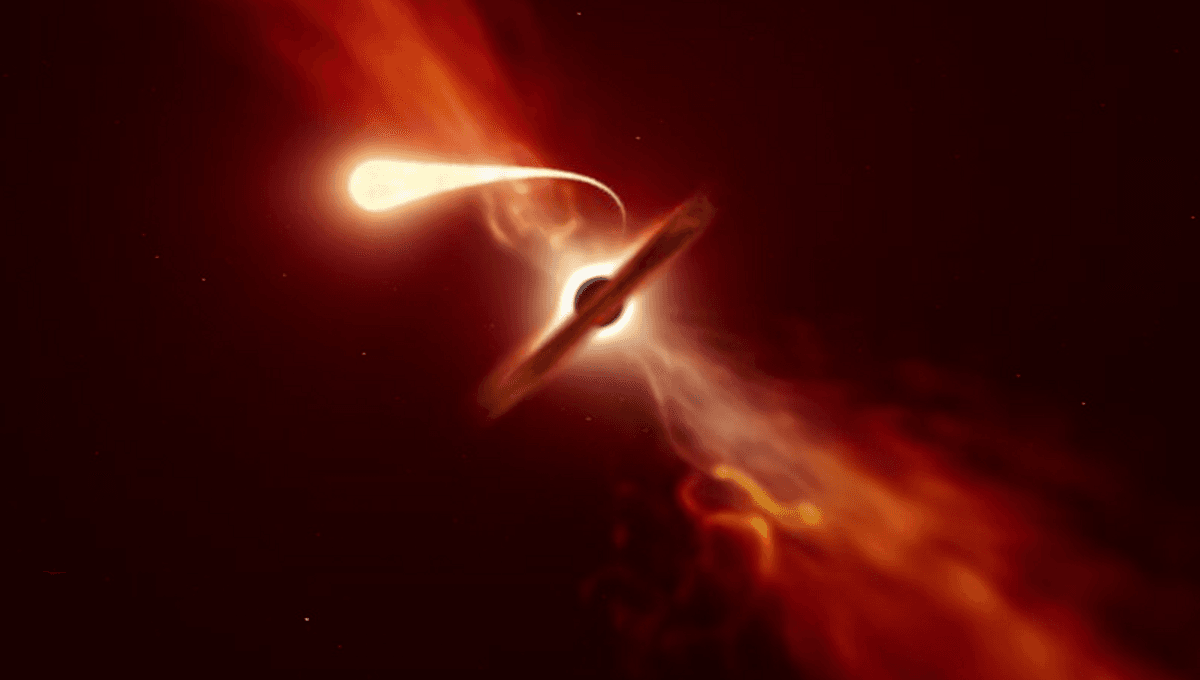
One of the great scientific discoveries of the late 20th century is that many systems are chaotic, making them impossible to predict far in advance. No matter how much data we collect on the weather, for example, we can’t be certain if it will be raining a month from now (a different thing from identifying average climatic trends). Orbits can be similar, particularly when subject to the gravitational forces of much larger objects. New research indicates this takes place shockingly fast around Sagittarius A*, the supermassive black hole at the center of the galaxy.
The orbit of the Earth changes over long cycles, moving from rounded to slightly more elongated and back again. Nevertheless, if you want to predict the Earth’s path a thousand or even a million years from now you can get pretty close, contributing to the stability that has allowed life to flourish.
The same is not true for asteroids, which are more influenced both by planets’ gravity, and pressure from sunlight. Consequently, no one knows for sure if an asteroid like Apophis will hit Earth before it collides with another planet, crashes into the Sun or is tossed into the outer Solar System. Nevertheless, we can predict well enough to know it poses no threat for a century.
Around a Supermassive Black Hole (SMBH) at the center of a galaxy, stars are similarly under the influence of the gravitational field from a mass millions of times greater than their own, as well as from each other. So, it’s not surprising their orbits are unpredictable far in advance. Given the larger scale on which these stars operate, however, it would seem logical that the point where we lose our capacity to know what will happen would be much more distant.
Instead, according to two new papers, we can’t tell where they will be even five centuries hence.
The authors applied the most advanced computer program available for modeling orbits under the influence of many forces to 27 stars that orbit perilously close to Sagittarius A*.
“Already after 462 years, we cannot predict the orbits with confidence,” said Professor Simon Portegies Zwart of Leiden University said in a statement. “That is astonishingly short.” By comparison, the program loses predictability for the Solar System 12 million years from now.
“So, the vicinity of the black hole is 30,000 times more chaotic than ours, and we didn’t expect that at all,” Portegies Zwart continued. “Of course, the Solar System is about 20,000 times smaller, contains millions of times less mass, and has only eight relatively light objects instead of 27 massive ones, but, if you had asked me beforehand, that shouldn’t have mattered so much.”
No matter the starting conditions of a simulation, eventually the authors found two or three stars make a close approach, their forces acting on each other to change their mutual orbits. Differences in the closeness of the approach determine the stars’ movements afterwards. The closer the event occurs to the SMBH, the larger the consequences of tiny differences in separation distance, which can be on the scale of a Planck Length, trillions of times smaller than the width of an atom.
Even though each stars’ mass is tiny compared to Sagittarius A*, their gravity still affects it, so the SMBH’s location is subtly different depending on what happens to the stars in the close encounter.
With every other star in the region dancing to the SMBH’s tune, even slight shifts in its location ripple through all the other stars. Soon, even those not part of the close approach have orbits determined by it in ways we can’t know beforehand.
The team tested Halley’s comet’s orbit and found it becomes chaotic on a timescale of centuries, driven by the gravity of Jupiter and Venus, but the comet is too light for the consequences to spread.
The authors coined the phrase “punctuated chaos” to describe what they witnessed, combining chaos theory with the evolutionary notion of punctuated equilibrium. They think situations like this, switching between chaos and calm, could be applicable in many other fields of science.
The two studies are published in the International Journal of Modern Physics D and Monthly Notices of the Royal Astronomical Society.
Source Link: At The Milky Way’s Heart, Stars’ Orbits Become Chaotic In Centuries